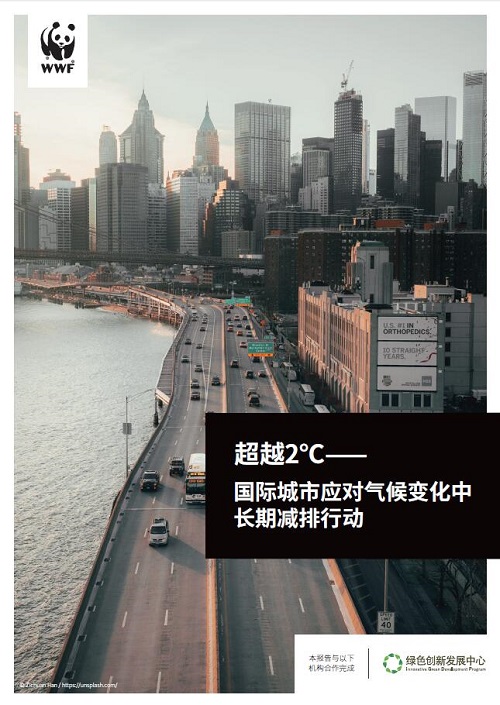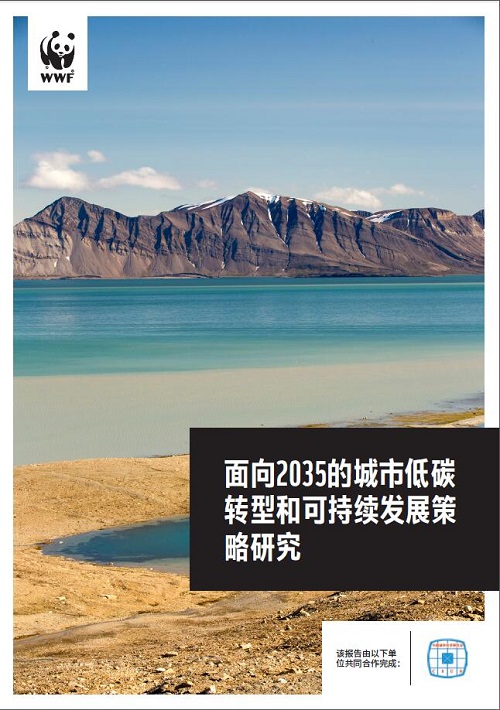
缓解城市热岛效应的通风廊道构建研究进展
编号
lyqk011415


中文标题
缓解城市热岛效应的通风廊道构建研究进展


作者单位
广东工业大学建筑与城市规划学院 广州 510090


期刊名称
中国城市林业


年份
2024


卷号
22


期号
2


栏目名称
专题1:城市绿地热缓解


中文摘要
在全球气候变暖的背景下,构建通风廊道是缓解城市热岛效应的有效途径,对改善局地气候环境有重要作用。文章通过梳理1995—2023年国内外通风廊道相关研究文献,总结了城市通风廊道对缓解城市热岛效应的作用机制以及构建通风廊道的研究方法,并对当前缓解热岛效应的通风廊道建设标准、多尺度评估、协同规划、现状研究缺陷和未来发展方向进行探讨,旨在为城市热环境改善和可持续宜居城市建设提供参考。


基金项目
国家自然科学基金(42101273);广东省自然科学基金(2024A1515010038)


英文标题
Research Progress in Ventilation Corridors Construction to Mitigate Urban Heat Island Effect


作者英文名
Xu Chenxi, Zhang Xiwen, Wu Lingling


单位英文名
School of Architecture and Urban Planning, Guangdong University of Technology, Guangzhou 510090, China


英文摘要
Under the background of global warming, the construction of ventilation corridors is an effective way to mitigate the urban heat island effect, which plays a crucial role in improving local climate condition. By reviewing relevant literature on ventilation corridors in 1995 and 2023 at home and abroad, this paper summarizes the working mechanisms through which urban ventilation corridors alleviate the urban heat island effect, and concludes the research methodologies. Furthermore, the current standards for ventilation corridor construction aiming to mitigate the urban heat island effect, along with multi-scale assessments, collaborative planning, existing limitations in research and future development directions, have been discussed. The study is expected to provide references for improving urban thermal environments and constructing sustainable and livable cities.


英文关键词
city;heat island effect;ventilation corridor;cooling effect


起始页码
42


截止页码
48


投稿时间
2023/6/6


作者简介
徐晨曦(1998-),女,硕士生,研究方向为城市降温与生态规划。E-mail:xucxchancy@163.com


通讯作者介绍
张曦文(1993-),女,博士,讲师,研究方向:景观生态与土地利用。E-mail:zhangxiwen@gdut.edu.cn


E-mail
zhangxiwen@gdut.edu.cn


DOI
10.12169/zgcsly.2023.06.06.0002


参考文献
[1] RUIZ-PÁEZ R,DÍAZ J,LÓPEZ-BUENO J A,et al.Does the meteorological origin of heatwaves influence their impact on health?A 6-year morbidity and mortality study in Madrid (Spain)[J].Science of the Total Environment,2023,855:158900.
[2] TURNER B L,LAMBIN E F,REENBERG A.The emergence of land change science for global environmental change and sustainability[J].Proceedings of the National Academy of Sciences of the United States of America,2007,104(52):20666-20671.
[3] 樊柏青,刘东云,李丹宁,等.北京市六环内区域城市绿地对地表温度降温效益的差异性[J].中国城市林业,2022,20(4):43-50.
[4] NOAA National Centers for Environmental Information.Monthly global climate report for Annual 2022[R/OL].[2023-06-06].https://www.ncei.noaa.gov/access/monitoring/monthly-report/global/202207.
[5] LAI C C,SHIH T P,KO W C,et al.Severe acute respiratory syndrome coronavirus 2 (SARS-CoV-2) and coronavirus disease-2019 (COVID-19):the epidemic and the challenges[J].International Journal of Antimicrobial Agents,2020,55(3):105924.
[6] HE B J,DING L,PRASAD D.Relationships among local-scale urban morphology,urban ventilation,urban heat island and outdoor thermal comfort under sea breeze influence[J].Sustainable Cities and Society,2020,60:102289.
[7] ANFINRUD P,STADNYTSKYI V,BAX C E,et al.Visualizing speech-generated oral fluid droplets with laser light scattering[J].The New England Journal of Medicine,2020,382(21):2061-2063.
[8] LUO X,YANG J,SUN W,et al.Suitability of human settlements in mountainous areas from the perspective of ventilation:a case study of the main urban area of Chongqing[J].Journal of Cleaner Production,2021,310:127467.
[9] SHI Z P,YANG J,ZHANG Y Q,et al.Urban ventilation corridors and spatiotemporal divergence patterns of urban heat island intensity:a local climate zone perspective[J].Environmental Science and Pollution Research International,2022,29(49):74394-74406.
[10] YANG J,WANG Y C,XUE B,et al.Contribution of urban ventilation to the thermal environment and urban energy demand:different climate background perspectives[J].Science of the Total Environment,2021,795:148791.
[11] 邹哲,康健,周志宇,等.特大城市主城区通风廊道规划控制研究:以天津市为例[J].建筑科学,2019,35(6):91-97,107.
[12] FANG Y H,ZHAO L Y.Assessing the environmental benefits of urban ventilation corridors:a case study in Hefei,China[J].Building and Environment,2022,212:108810.
[13] CHEN C X,YE S P,BAI Z C,et al.Intelligent mining of urban ventilation corridors based on high-precision oblique photographic images[J].Sensors,2021,21(22):7537.
[14] GU K K,FANG Y H,QIAN Z,et al.Spatial planning for urban ventilation corridors by urban climatology[J].Ecosystem Health and Sustainability,2020,6(1):1747946.
[15] 白杨,王晓云,姜海梅,等.城市热岛效应研究进展[J].气象与环境学报,2013,29(2):101-106.
[16] 房小怡,李磊,刘宛,等.我国城市通风廊道研究与实践进展[J].生态学杂志,2021,40(12):4088-4098.
[17] KRESS R.Regionale Luftaustauschprozesse und ihre Bedeutung für die räumliche Planung[M].Dortmund:Institut for Umweltschutz der Universitat Dortmund,1979.
[18] 刘姝宇,沈济黄.基于局地环流的城市通风道规划方法:以德国斯图加特市为例[J].浙江大学学报(工学版),2010,44(10):1985-1991.
[19] TSE K T,WEERASURIYA A U,ZHANG X,et al.Pedestrian-level wind environment around isolated buildings under the influence of twisted wind flows[J].Journal of Wind Engineering and Industrial Aerodynamics,2017,162:12-23.
[20] XIE P,YANG J,WANG H Y,et al.A New method of simulating urban ventilation corridors using circuit theory[J].Sustainable Cities and Society,2020,59:102162.
[21] 关吉平,任鹏杰,周成,等.高层建筑行人高度风环境风洞试验研究[J].山东建筑大学学报,2010,25(1):21-25.
[22] WANG W W,WANG D,CHEN H,et al.Identifying urban ventilation corridors through quantitative analysis of ventilation potential and wind characteristics[J].Building and Environment,2022,214:108943.
[23] 尹杰,詹庆明.基于GIS和CFD的城市街道通风廊道研究:以武汉为例[J].中国园林,2019,35(6):84-88.
[24] CHANG S Z,JIANG Q G,ZHAO Y.Integrating CFD and GIS into the development of urban ventilation corridors:a case study in Changchun city,China[J].Sustainability,2018,10(6):1814.
[25] 郑祚芳,雷小燕,高华.北京城市通风廊道研究Ⅰ:环境效应模拟[J].地理科学,2022,42(4):631-639.
[26] 成丹,许杨,刘静,等.武汉市东南部通风廊道构建和气象效应研究[J].长江流域资源与环境,2022,31(11):2500-2513.
[27] 莫尚剑,沈守云,廖秋林.基于WRF模式的长株潭城市群绿心通风廊道规划策略研究[J].中国园林,2021,37(1):80-84.
[28] 颜廷凯,金虹.基于WRF/UCM数值模拟的严寒地区城市热岛效应研究[J].建筑科学,2020,36(8):107-113.
[29] LIU D D,ZHOU S H,WANG L J,et al.Research on the planning of an urban ventilation corridor based on the urban underlying surface taking Kaifeng city as an example[J].Land,2022,11(2):206.
[30] QIAO Z,XU X L,WU F,et al.Urban ventilation network model:a case study of the core zone of capital function in Beijing metropolitan area[J].Journal of Cleaner Production,2017,168:526-535.
[31] DANG B,LIU Y H,LYU H L,et al.Assessment of urban climate environment and configuration of ventilation corridor:a refined study in Xi'an[J].Journal of Meteorological Research,2022,36(6):914-930.
[32] FANG Y H,GU K K,QIAN Z,et al.Performance evaluation on multi-scenario urban ventilation corridors based on least cost path[J].Journal of Urban Management,2021,10(1):3-15.
[33] LIU X Q,HUANG B,LI R R,et al.Wind environment assessment and planning of urban natural ventilation corridors using GIS:Shenzhen as a case study[J].Urban Climate,2022,42:101091.
[34] 申鑫杰,赵芮,何瑞珍,等.郑州市市区风环境模拟研究[J].地球信息科学学报,2020,22(6):1349-1357.
[35] 杨务发,余坤勇,耿建伟,等.福州市通风廊道选线与优化[J].中国城市林业,2022,20(4):123-128.
[36] 党冰,房小怡,吕红亮,等.基于气象研究的城市通风廊道构建初探:以南京江北新区为例[J].气象,2017,43(9):1130-1137.
[37] KRESS R.Regionale Luftaustauschprozesse und ihre Bedeutung für die räumliche Planung[M].[Bonn-] Bad Godesberg:Bundesminister für Raumordnung,Bauwesen und Städtebau,1979
[38] 布朗G Z,马克·德凯.太阳辐射·风·自然光:建筑设计策略[M].常志刚,刘毅军,朱宏涛,译.北京:中国建筑工业出版社,2008.
[39] 巴鲁克·吉沃尼.建筑设计和城市设计中的气候因素[M].汪芳,阚俊杰,张书海,译.北京:中国建筑工业出版社,2011.
[40] 梁颢严,李晓晖,肖荣波.城市通风廊道规划与控制方法研究以《广州市白云新城北部延伸区控制性详细规划》为例[J].风景园林,2014(5):92-96.
[41] 张少康,刘沛,魏冀明.基于风环境分析的珠三角地区城镇空间规划引导[J].规划师,2016,32(9):118-122.
[42] 任超,吴恩融,卢茨·卡施纳.城市环境气候信息在德国城市规划中的应用及其启示[J].国际城市规划,2013,28(4):91-99.
[43] KUSAKA H,KIMURA F,HIRAKUCHI H,et al.The effects of land-use alteration on the sea breeze and daytime heat island in the Tokyo metropolitan area[J].Journal of the Meteorological Society of Japan Ser II,2000,78(4):405-420.
[44] 韩旭.基于气候功能评估的城市通风廊道规划建设:以西安市主城区为例[J].建筑与文化,2021(4):154-155.
[45] 向艳芬,郑伯红,郭睿,等.基于空间封闭度的城市通风廊道构建:以衡阳县城为例[J].热带地理,2023,43(8):1523-1535.
[46] 刘名瑞,曾勤,邓玮,等.重点地区城市设计的风环境评估及规划管控研究:以广州市为例[J].城市规划学刊,2021(4):35-42.
[47] 周志宇,康健,舒平,等.建筑布局对住区风热环境的影响分析与优化策略[J].济南大学学报(自然科学版),2023,37(3):349-361.
[48] 马童,陈天.公共健康视角下城市街区综合通风效能与规划响应研究[J].西部人居环境学刊,2022,37(2):39-46.
[49] 陈日飙,陈竹,尹名强,等.通风节能视角中多尺度的风环境评估方法研究:以深圳后海中心区为例[J].南方建筑,2023(2):77-87.
[50] 冯娴慧.城市的风环境效应与通风改善的规划途径分析[J].风景园林,2014(5):97-102.
[51] 王绍增,李敏.城市开敞空间规划的生态机理研究(下)[J].中国园林,2001,17(5):32-36.
[52] 张雅妮,殷实,肖毅强.气候适应性视角下的河道空间城市设计评价和策略研究:以广州市荔枝湾涌改造一期工程为例[J].西部人居环境学刊,2018,33(3):73-79.
[53] 柏春.城市路网规划中的气候问题[J].西安建筑科技大学学报(自然科学版),2011,43(4):557-562.
[54] 毛蒋兴,古艳,蒙金华,等.基于热岛效应的城市广义降温通道构建[J].规划师,2015,31(12):65-71.


PDF全文
浏览全文


-
相关记录
更多
- 垂直绿化对城市微气候影响研究综述 2023
- 哈尔滨城市森林景观季节变化对地表温度影响的定量研究 2024
- 不同城市热岛梯度下公园冷岛效应和景观特征的关联机制 2024
- 基于Landsat-8遥感影像的扬州市城市公园夏季温湿效应 2023
- 近20年来欧洲城市生物多样性研究进展 2022
- 福州市通风廊道选线与优化 2022
 打印
打印



